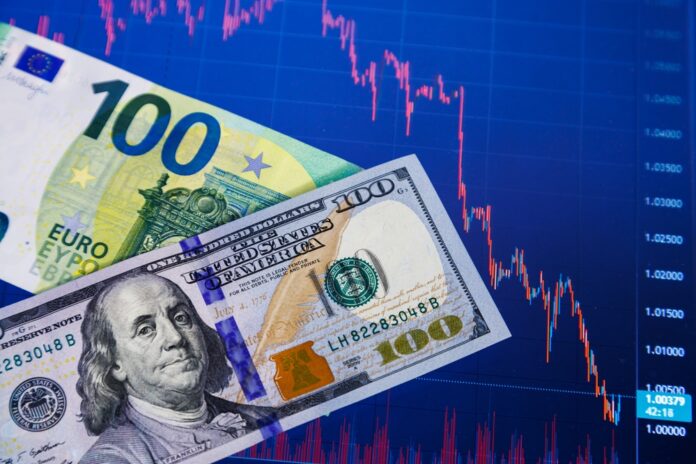The U.S. dollar traded steadily on Tuesday but remained near recent lows as fears of a potential U.S. recession, fueled by escalating trade tensions, continued to weigh on market sentiment. Meanwhile, the British pound slumped amid growing concerns over the U.K.’s economic outlook.
Dollar Remains Under Pressure
At 03:55 ET (07:55 GMT), the U.S. Dollar Index—which measures the greenback against a basket of six major currencies—was flat at 103.001, still down over 1% since the latest tariffs were announced.
Lingering fears of a U.S. recession have kept the dollar fragile, with markets increasingly betting that the Federal Reserve could cut interest rates earlier this year to counter the economic impact of President Donald Trump’s tariffs.
Global equity markets have also been under pressure since the trade measures were unveiled, contributing to uncertainty in the currency markets.
“The past couple of sessions have restored some normality to FX correlations. If equities find some relief, the dollar could stay under pressure today,” analysts at ING noted. “However, we remain cautious about chasing rebounds in high-beta and oil-sensitive currencies, as Trump has shown little sign of scaling back protectionist measures.”
Sterling Struggles as Growth Outlook Weakens
The British pound continued to decline, with GBP/USD falling 1% to 1.2763, hovering near its lowest level in a month. Investors are becoming increasingly cautious about the U.K. currency amid concerns over mounting debt and fragile economic prospects.
“This setup is extremely unfavorable for sterling—high debt levels, strained fiscal limits, and overly optimistic growth projections,” a JPMorgan trader noted in a Monday report.
Economic data hasn’t helped improve sentiment. Deutsche Bank projected a slight 0.1% GDP rebound for February, following a 0.1% contraction in January. However, the outlook remains fragile, as Deutsche Bank warned that Trump’s tariffs could shave 0.3 to 0.6 percentage points off U.K. GDP.
Meanwhile, EUR/USD edged up 0.1% to 1.0968, staying close to last week’s six-month high. European Union leaders are set to vote on retaliatory measures against U.S. tariffs on Wednesday, with the European Commission preparing to impose tariffs on up to €18 billion worth of U.S. imports.
Asian Markets: Yuan Weakens Further
In Asia, the Japanese yen pulled back slightly, with USD/JPY rising 0.1% to 147.14. However, the yen remained near recent highs as risk aversion kept demand for safe-haven assets elevated.
The Chinese yuan continued to slide, with USD/CNY climbing 0.4% to 7.3349, its weakest level since October 2023.
Adding to tensions, Trump on Monday threatened to impose an additional 50% tariff on China if Beijing did not roll back its 34% retaliatory tariffs on U.S. goods. However, Beijing pushed back, warning that it was ready to “fight to the end” in response to a prolonged trade war.



